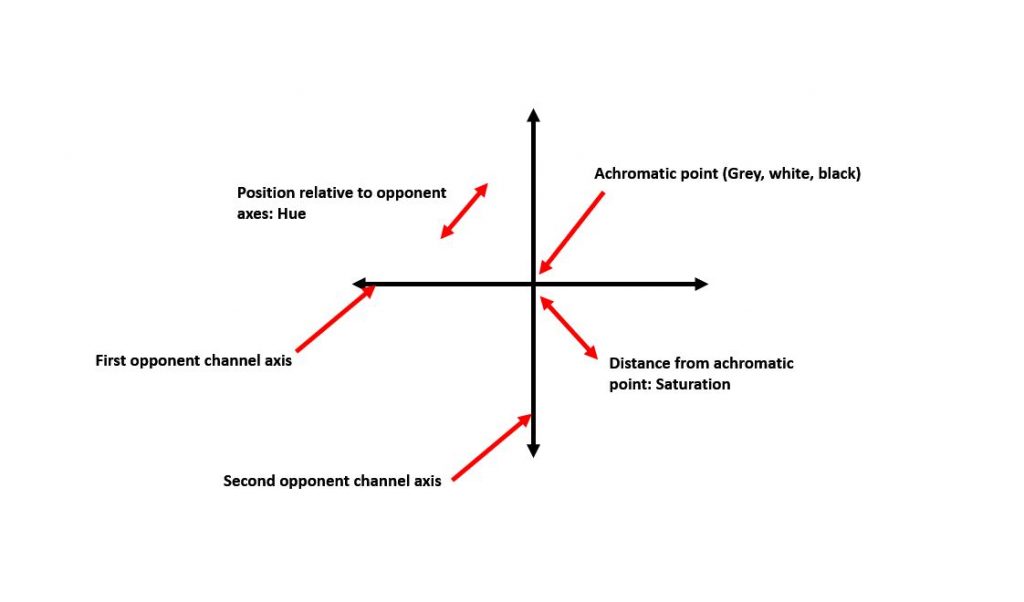How Can We Help?
Perceptual contrast in the Receptor Noise Limited (RNL) model is calculated as the response of opponent processes which themselves are ‘fed’ by the stimulation of each receptor channel in relation to the channel specific noise (or Weber fraction in the case of the log-transformed RNL model used in QCPA):


This means that we can plot any colour perceived by a trichromat in a XY coordinate system where each axis corresponds to the stimulation of an opponent channel:

References:
Kelber, A., Vorobyev, M. & Osorio, D. 2003. Animal colour vision – behavioural tests and physiological concepts. 81–118.
The Receptor Noise Limited Colour Space
